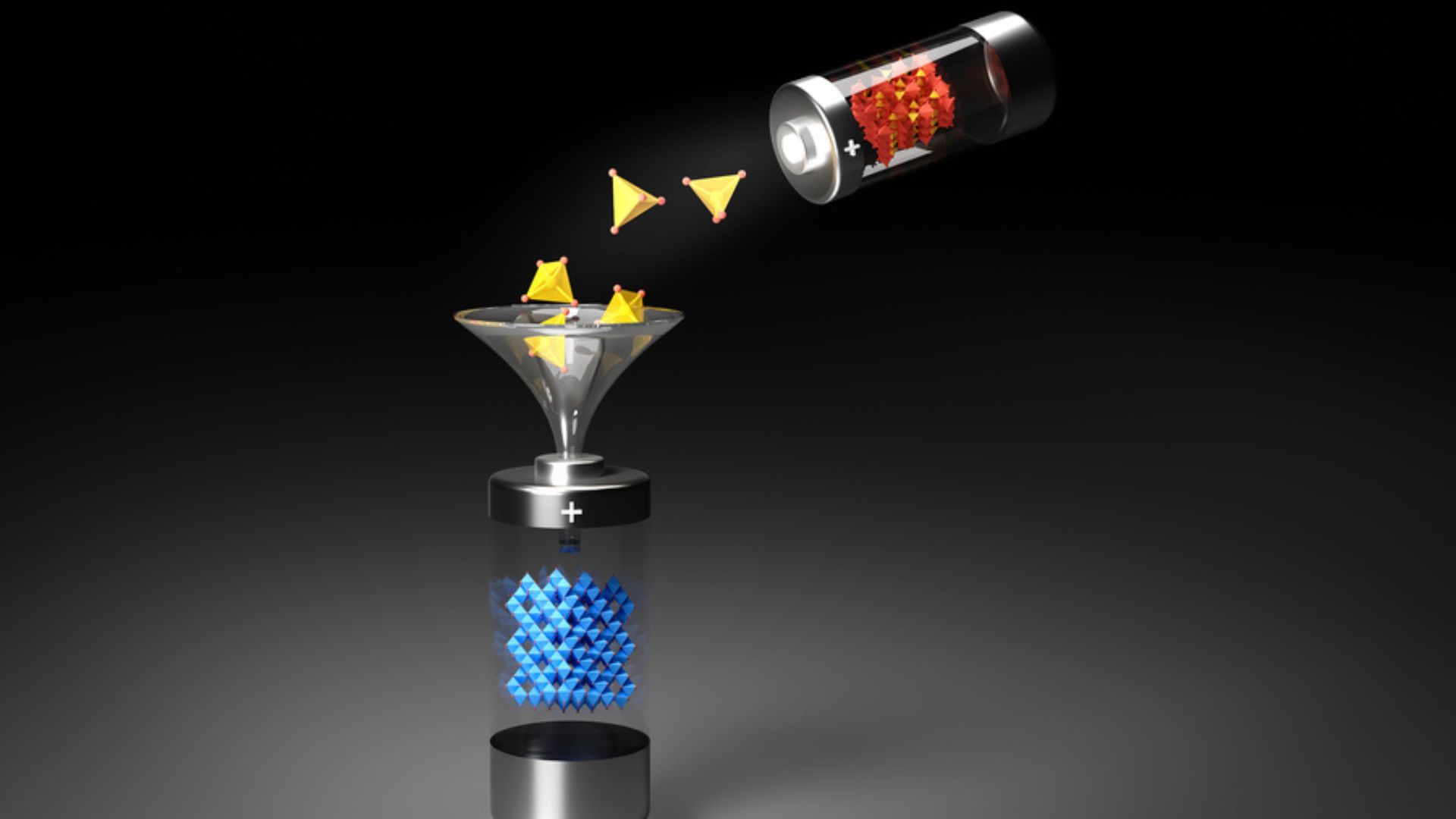For the past decade, disordered rock salt has been studied as a potential breakthrough cathode material for lithium-ion batteries and a key to creating low-cost, high-energy storage for everything from cell phones to electric vehicles to renewable energy storage.
A new MIT study is making sure the material fulfills that promise.
Led by Ju Li, the Tokyo Electric Power Company Professor in Nuclear Engineering and professor of materials science and engineering, a team of researchers describes a new class of partially disordered rock salt cathode integrated with polyanions—dubbed disordered rock salt-polyanionic spinel, or DRXPS—that delivers high energy density at high voltages with significantly improved cycling stability.
“There is typically a trade-off in cathode materials between energy density and cycling stability … and with this work we aim to push the envelope by designing new cathode chemistries,” said Yimeng Huang, a postdoc in the Department of Nuclear Science and Engineering and first author of a paper describing the work published today in Nature Energy.
“(This) material family has high energy density and good cycling stability because it integrates two major types of cathode materials, rock salt and polyanionic olivine, so it has the benefits of both.”
Earth-abundant element
Importantly, the new material family is primarily composed of manganese. This earth-abundant element is significantly less expensive than nickel and cobalt, typically used in cathodes today.
“Manganese is at least five times less expensive than nickel, and about 30 times less expensive than cobalt,” Li said.
“Manganese is also the one of the keys to achieving higher energy densities, so having that material be much more earth-abundant is a tremendous advantage.”
Li and his co-authors wrote that that advantage will be particularly critical as the world looks to build the renewable energy infrastructure needed for a low—or no-carbon future.
Batteries are a particularly important part of that picture, not only because they have the potential to decarbonize transportation with electric cars, buses, and trucks but also because they will be essential to addressing the intermittency issues of wind and solar power by storing excess energy and feeding it back into the grid at night or on calm days when renewable generation drops.
They wrote that, given the high cost and relative rarity of materials like cobalt and nickel, efforts to scale up electric storage capacity rapidly likely lead to extreme cost spikes and potentially significant materials shortages.
“If we want to have true electrification of energy generation, transportation, and more, we need earth-abundant batteries to store intermittent photovoltaic and wind power,” Li said. “I think this is one of the steps toward that dream.”
Obstacles in existing materials
The new study addresses one of the major challenges facing disordered rock salt cathodes — oxygen mobility.
While the materials have long been recognized for offering very high capacity—as much as 350 milliampere-hours per gram—compared to traditional cathode materials, which typically have capacities of between 190 and 200 milliampere-hours per gram, they are not very stable.
The high capacity is contributed partially by oxygen redox, which is activated when the cathode is charged to high voltages.
But when that happens, oxygen becomes mobile, leading to reactions with the electrolyte and degradation of the material, eventually leaving it effectively useless after prolonged cycling.
To overcome those challenges, Huang added another element—phosphorus—acting like a glue, holding the oxygen in place to mitigate degradation.
“The main innovation here, and the theory behind the design, is that Yimeng added just the right amount of phosphorus, formed so-called polyanions with its neighboring oxygen atoms, into a cation-deficient rock salt structure that can pin them down,” Li explained.
“That allows us to basically stop the percolating oxygen transport due to strong covalent bonding between phosphorus and oxygen … meaning we can both utilize the oxygen-contributed capacity, but also have good stability as well.”
Li said the ability to charge batteries to higher voltages is crucial because it allows simpler systems to manage the energy they store.
“You can say the quality of the energy is higher,” he says. “The higher the voltage per cell, then the less you need to connect them in series in the battery pack, and the simpler the battery management system.”
ABOUT THE EDITOR
Kapil Kajal Kapil Kajal is an award-winning journalist with a diverse portfolio spanning defense, politics, technology, crime, environment, human rights, and foreign policy. His work has been featured in publications such as Janes, National Geographic, Al Jazeera, Rest of World, Mongabay, and Nikkei. Kapil holds a dual bachelor’s degree in Electrical, Electronics, and Communication Engineering and a master’s diploma in journalism from the Institute of Journalism and New Media in Bangalore.

Deepak Sen is a tech enthusiast who covers the latest technological innovations, from AI to consumer gadgets. His articles provide readers with a glimpse into the ever-evolving world of technology.


